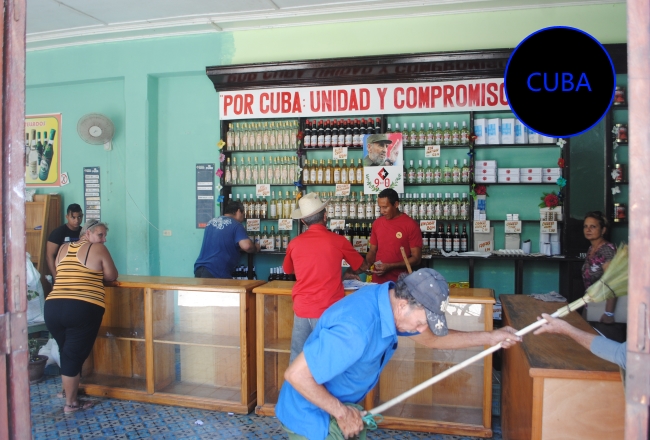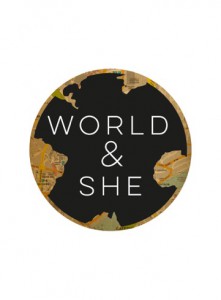A Few Things No One Tells You about Cuba

No matter how much you prepare yourself before a trip, no matter how many guidebooks you read or photos you look at or route maps you plan, you will be just as disorientated as everybody else when the place you’ve only imagined suddenly become real. No amount of preparation can pre-empt culture shock, that bewildered, giddy high that hits the moment you arrive in a new place, especially a place as strange and wonderful as Cuba. That said there are a number of interesting things I learned about Cuba on the very day I arrived, things I feel it my duty to share with you here.
To begin with the flight out was testing. Everyone drank £10 mini-bottles of Prosecco, they served bangers and mash for dinner, there was no TV and the pilot made a number of announcements reminding us all that verbal abuse of the cabin crew would not be tolerated. It was a Thomas Cook flight, its few hundred passengers on their way from the grey streets of Manchester, which like the rest of the UK was unwilling to let winter thaw into spring, to the glittering, tropical beach paradise of Guardalavaca.
The customs officer seemed pissed off but then they often do. He flicked lazily through my passport looking up only to say, ‘you travel very much’ to which I replied, ‘yeah’, because it wasn’t a question so I didn’t really have an answer. Everyone clustered around the luggage belt like ants around an apple core and a border control officer encouraged his daft spaniel sniffer dog to tear open the backpack of a teenaged lad on a family holiday, presumably because he was dressed like Eminem and had a rollie behind his ear.
And then our fellow Brits dispersed only to regroup on a fleet of nice air conditioned buses that would take them to their all-inclusive resorts and we were left alone to try to figure things out the best way we could.
In the back of a taxi we crept up and down Holguin’s narrow, labyrinthine streets, made up of pastel-painted concrete houses of different shapes and sizes, some newly constructed with a fresh lick of paint and some old and crumbling but doing so in such a handsome way that these older houses were undoubtedly the loveliest. We arrived at our Casa Particular (B&B), dropped our bags and then hit the streets on the slippery concave incline of a massive learning curve.
Things We Learned on Day One
- In most Cuban cities every day is Friday or, more accurately, every day is Friday night. Despite the fact that it was Monday afternoon, the vibe on these streets was very much Friday night. At any given time the streets, parks, and squares of the city were packed with people, just hanging around, drinking, listening to music and, yes, dancing. I suspect the advent of cable TV strangled this sort of communal downtime for the rest of the world and Netflix completely finished it off but in Cuba loitering al fresco is still for everyone, not just those aged 13-16.
- If you’re going to spend any amount of time in Cuba you have to be willing to queue. I say queue but what I really mean is cluster with intent. People queue for things like internet cards (2CUC scratchcard things that are supposed to give you access to the internet but more about that later) ice cream, prescriptions at the pharmacy, food at the market, tickets for the theatre and cash withdrawals at the bank. And when I say queue I don’t just mean a few minutes wait in an orderly line, I mean an indeterminate wait in a chaotic mass of people, all standing and sweating in the sun. Above is a photo of me approximately half way through a 25 minute wait in a pharmacy.
- You’re going to spend a lot of time in vintage cars. Cuba’s classic cars are not some kind of tourist prop, kept in operation for the sole purpose of taking tourists sightseeing in Havana. In Holguin almost every car on the road could be considered a classic, some of them absolutely stunning, vintage gems and some of them knackered old Russian-made death traps. It’s hard to find a taxi that’s less than 60 years old in Holguin and the sight of a group of agitated old men shouting instructions at a young man, whose upper body is lost under the hood of a classic car, is a very, very common one.
- Whether you know a little about Cuba’s economic situation or not, the first time you see what’s available to the average Cuban consumer it will comes as a surprise. This is an embarrassing story but I’m going to share it anyway. On our first night in Holguin we were walking for the sake of walking in the streets around the town square when I paused outside a closed shop and peered in through its dusty windows. Inside I could see rows of glass display cases, similar to the ones they use in museums, housing a scattered display of random bric-a-brac, combs, perfume bottles, mismatched china and childrens’ clothes. Ugly clothes hung on ugly plastic hangers and I could see some dog-eared books lined up on a bookcase in the corner. ‘That’s nice. A second-hand shop!’ I said, not realising until the next day that it was actually a ‘department store’. My usual ‘I can buy whatever I need there’ attitude to packing didn’t cut it in Cuba and there were a number of things I struggled to find including but not limited to; shampoo for blonde hair, roll-on deodorant, diet pop, chewing gum, new knickers when I ran out of clean ones and one time, honestly, bottled water.
- It’s very, very difficult to get online in most parts of Cuba, apart from Havana which is so unlike the rest of Cuba it might as well be a country in its own right. The only way to access public wifi in Cuba is to buy a card from Etecsa, which is the country’s only network provider. Buying the card in the first place can be a chore (see ‘queuing’) and the only way to use it is to join the other hundred or so people sitting on park benches in the town square, hunched over their devices, desperately willing those elusive curved bars of wifi to turn white. We knew this – that it was difficult to get online – but we still weren’t prepared for the lost feeling that accompanied the realisation that the online world was now off limits. That refresh impulse, the reflexive downward thumb swipe was suddenly obsolete and my iphone became nothing more than an inferior camera.
The realisation that we couldn’t travel the same way in Cuba as we had always travelled in the past momentarily rocked our world. There would be no Google Maps, no Trip Advisor, no blogs and no asking people for help, as we don’t speak a word of Spanish. It crossed my mind that maybe this trip was just too far out of our comfort zone and we have actually taken on more than we could chew.
But then again, the idea that I should probably join a Buddhist convent crossed my mind once. That idea passed, as did the idea that backpacking for a month in Cuba was going to be too difficult. As the days turned into weeks being in Cuba changed from difficult and challenging to exciting and inspiring, finally becoming in retrospect one of the most rewarding things I’ve ever done.
I have so much more to share about Cuba so pop back from time to time to see what’s new.







3 Responses
Hi there,
Wonderful post you wrote about the less known things about Cuba. You hit right on spot. I spent 4 months in Cuba 2 years ago, and can only say that you are so right! Back then though, there was no WIFI in the parks so the lines outside ETECSA was just that longer…
Looking forward to looking through more of your Cuba stuff.
Hi Becci,
Thanks so much for your comment. I found being in Cuba such a challenge and imagine it was even more difficult two years ago. I’d love to go back but would definitely learn a little Spanish before attempting it! More Cuba adventures to follow…!
Yet no mention of why these things happen in Cuba and not in New York, Pittsburgh or even Keokuk.